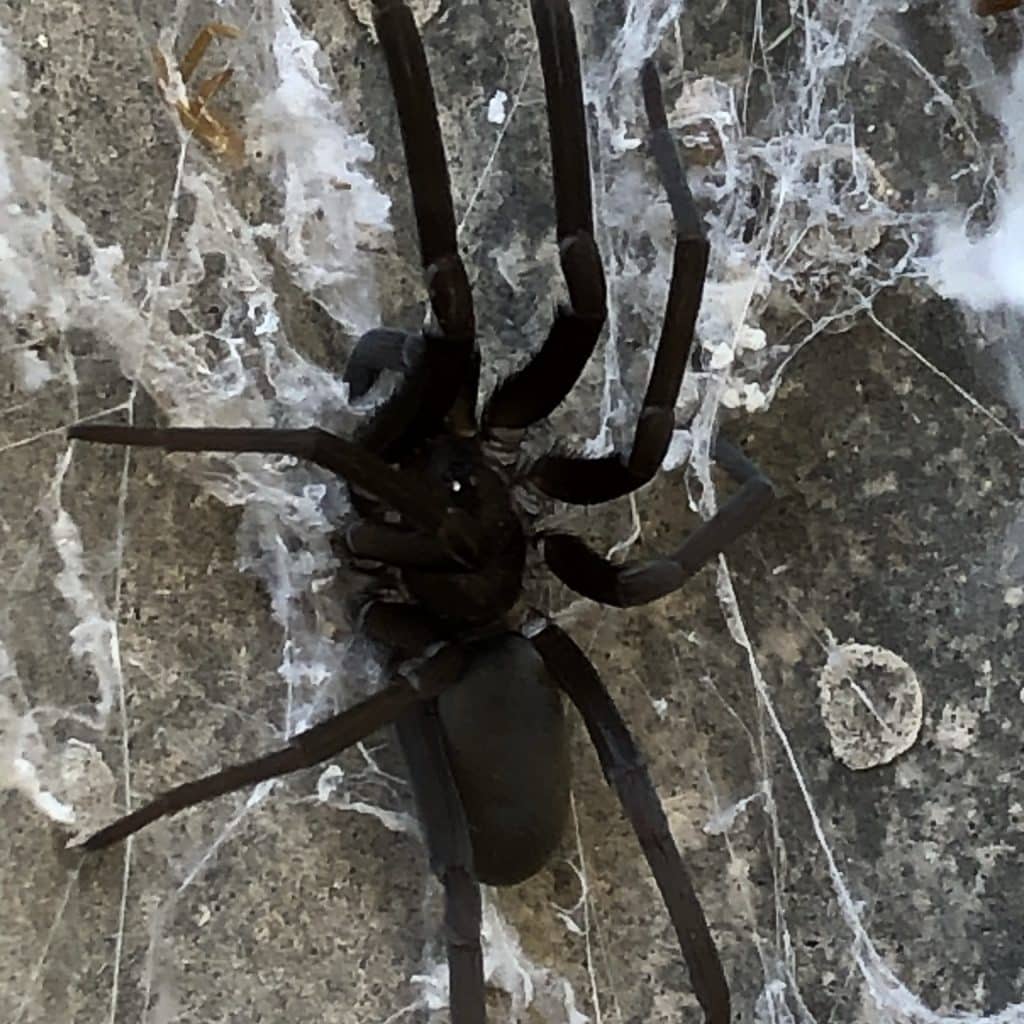As far as spiders that live in our homes go, the Southern House Spider is the largest and most imposing – certainly when you first spot one. But size does not equate to danger. In this case, these spiders are as docile as they come. But they certainly demand attention. Adults of both sexes can grow to be 2 inches across, legs included.
Of the many spider house guests you are likely to encounter, these critters are not easily seen, tucked away in spaces that you rarely go, like the corners of closets, behind those piles of boxes in that junk room, or in the garage. They are also nocturnal, hiding in cracks and crevices where they make their homes and are detected more by the webs they make.
Ever wonder what makes those messy looking, radially arranged webs in the corners of a room, many at the ceiling where a crack is located? That is a sure sign a Southern House Spider is there, tucked in a crack as narrow as a quarter of an inch. For such a large spider, that is a feat made possible by their flattened bodies. Their family name, Filistatidae, means crevice weavers.
Unlike the sticky webs of other web-building spiders, house spiders produce a non-sticky web with many fine filaments that act like Velcro to ensnare their prey. This design gives the web its messy look. Females rarely move from their lairs and simply wait for prey to come by and get stuck in the web. Males also make webs, but adults take to wandering in search of mates.

Males are also slenderer in appearance than females and are often mistaken for Brown Recluse Spiders, of which they are not closely related, but can occur in similar places. Southern House spiders are larger than Brown Recluse spiders, have prominent pedipalps (short leg-like appendages above their fangs), and do not have the distinctive violin shape mark on their cephalothorax (fused head and thorax).
As for being docile, these imposing spiders rarely bite and are more likely to play dead when handled, unless of course you try to grab a leg and tug on it. Any spider or insect would do the same. They also have poor eyesight and may not even notice you as they scoot across your foot or arm. Their intention is not what you think in that moment.
Aside from that, you must admit (or not) that these spiders are dramatic in appearance, for their size, the texture on their bodies, and their color. If you look closely, the females sport a fine coat of velvet hairs and the basal joint of their legs are often white. As a friend of mine noted, they have “bling”.
It is wise to view spiders without catching them, like I often do, but I am a Crazy Cajun after all. Better to gaze in amazement from a safe distance and leave them be. They are feeding on the less desirable critters in your homes. Outside of human habitations, these spiders find refuge in the cracks of a variety of habitats.
Hope to see you in our great outdoors!